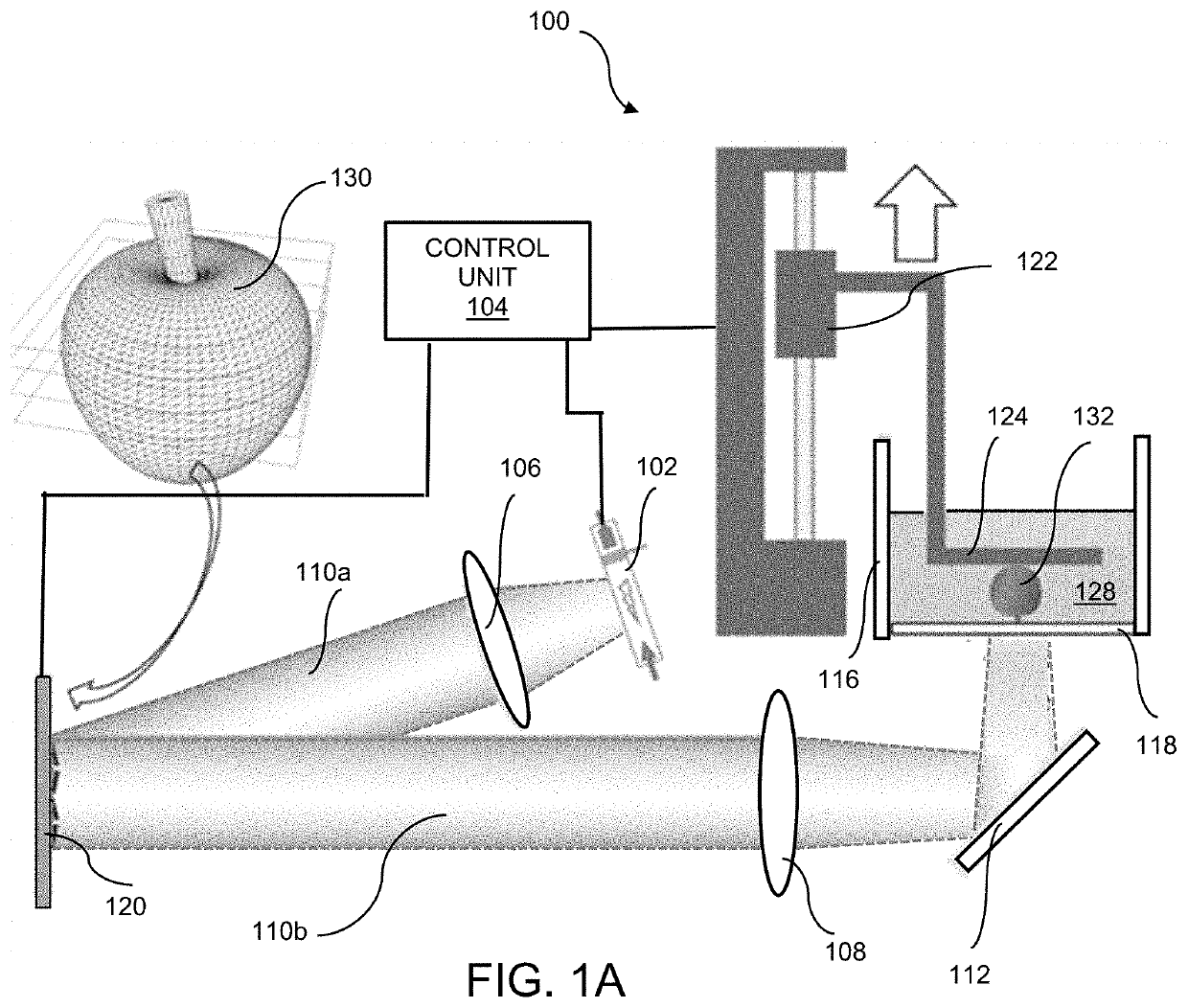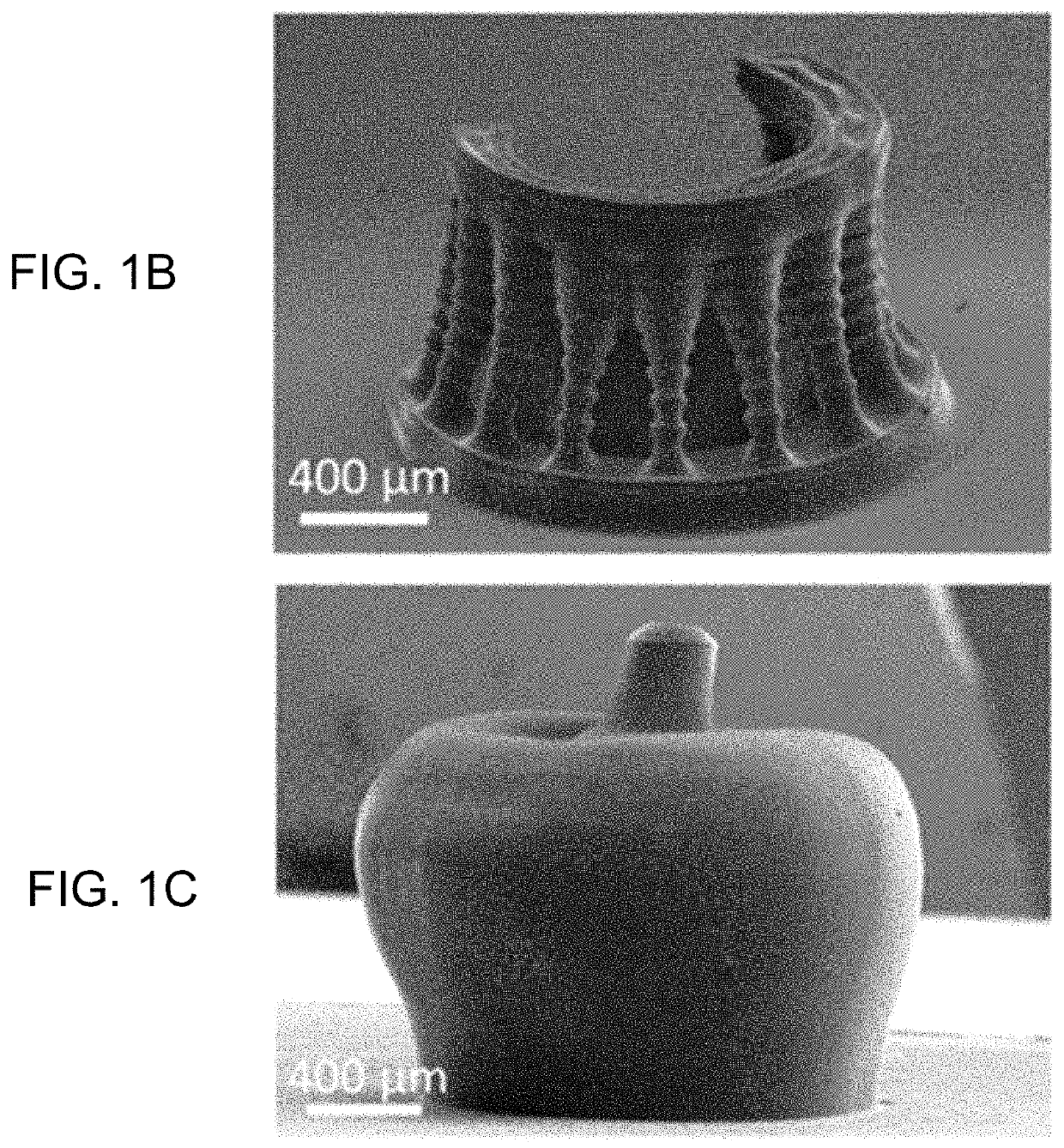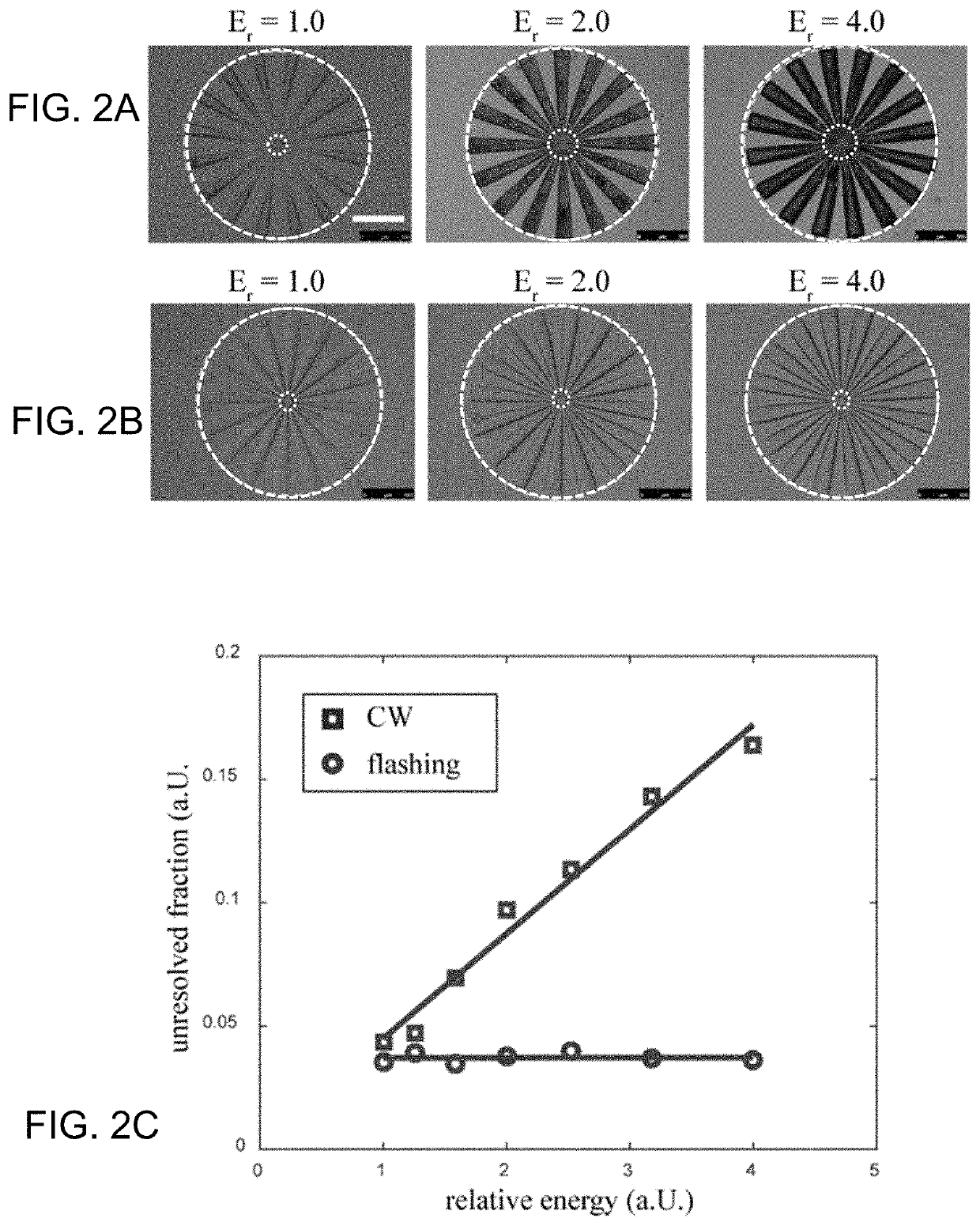High-fidelity 3D printing using flashing photopolymerization
a photopolymerization and high-fidelity technology, applied in the field of micro-scale 3d printing methods, to achieve the effect of poor resolution
- Summary
- Abstract
- Description
- Claims
- Application Information
AI Technical Summary
Benefits of technology
Problems solved by technology
Method used
Image
Examples
Embodiment Construction
[0022]An embodiment of a printer for performing the inventive method for high fidelity 3D printing by flashing photopolymerization, i.e., “FPP 3D”, is shown in the schematic of FIG. 1A. The printer 100 uses a xenon flash tube 102 as the light source, which is connected to an electrical control unit 104. The light is projected along optical pathway 110a through optical lens 106 (or a lens assembly) to a digital micro-mirror device (DMD) 120 which modulates the light with the photomask image, represented by sample image 130, which, in the illustrated example, is an apple. Modulated light follows the optical path 110b through lens (or lens assembly) 108 for projection onto the transparent anti-adhesion substrate 118. As illustrated, optical path 110b is directed to substrate 118 by mirror 112. A motorized stage 122 is used to control the motion of the sample supporting platform 124. Control unit 104 controls and synchronizes activation of flash tube 102, manipulation of DMD 120 to proj...
PUM
| Property | Measurement | Unit |
|---|---|---|
| thickness | aaaaa | aaaaa |
| thickness | aaaaa | aaaaa |
| peak power | aaaaa | aaaaa |
Abstract
Description
Claims
Application Information
 Login to View More
Login to View More - R&D
- Intellectual Property
- Life Sciences
- Materials
- Tech Scout
- Unparalleled Data Quality
- Higher Quality Content
- 60% Fewer Hallucinations
Browse by: Latest US Patents, China's latest patents, Technical Efficacy Thesaurus, Application Domain, Technology Topic, Popular Technical Reports.
© 2025 PatSnap. All rights reserved.Legal|Privacy policy|Modern Slavery Act Transparency Statement|Sitemap|About US| Contact US: help@patsnap.com



